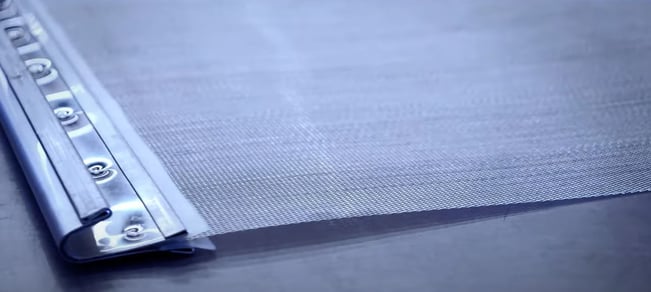What Is a Wire Mesh Dewatering Screen? (Definition and Functions)
Whether for cooking, construction, decoration, etc., aggregate plays a significant role in making the world go round. For this reason, several processing steps must be taken before most forms of aggregate reach the end user.
Now, these processing steps naturally present hurdles that aggregate processing plants must exhaust resources to overcome. Dewatering, for example, is inevitable in most aggregate processing operations.
To combat this concern, dewatering screens constructed from a reliable screening media, such as woven wire mesh, must be used. That said, what exactly is a woven wire mesh dewatering screen, and how do they work?
W.S. Tyler has been providing industry-leading aggregate screening solutions for over 150 years. Since the start, we have strived to maintain the fundamental principles of the company: helping customers develop a wire mesh solution that would provide usefulness and lead to desirable profits.
And that’s why we wrote the following article highlighting the core concepts of woven wire mesh dewatering screens. You will learn:
- The definition of dewatering
- The definition of a woven wire mesh dewatering screen
- The components of a dewatering screen
- The functions of a dewatering screen
What Is Dewatering?
Dewatering is the process of removing water from a bulk quantity of sediment, such as sand or coal. It is often employed after said sediment undergoes a washing process that leaves the material with high moisture content.
To facilitate the dewatering process, many turn to woven wire mesh dewatering screens.
What Is a Woven Wire Mesh Dewatering Screen?

Woven wire mesh is a network of warp and weft wires that become interwoven after a centuries-old weaving process, forming various weave patterns with precise pore openings. A dewatering screen is a screening media that is designed to facilitate solid-liquid separation, allowing water to be drained from freshly washed or mined sediment.
A dewatering screen that utilizes woven wire mesh will generally be designed to dewater particles ranging from 4 mesh to 325 mesh.
What Are the Components of a Woven Wire Mesh Dewatering Screen?
A typical woven wire mesh dewatering screen consists of two components: the wire mesh layers and a hook system.
There are two hooks that are attached to parallel sides of the panel. These hooks allow the dewatering screen to be interested and secured in a vibrating screen machine.
In regards to the wire mesh screens, dewatering screens will either have a single- or double-layer configuration.
Double-layer configurations are used when the screening layer has a finer mesh specification and needs a supportive layer to withstand prolonged dewatering.
How Does a Woven Wire Mesh Dewatering Screen Work?
As the water, sediment slurry passes over the dewatering screen panels, water drains through the pore openings of the mesh while the freshly washed sediment is retained. The vibrating screen machine delivers constant agitation to the dewatering screen panels, further enabling water to drain from the material.
It should be noted that as finer particles, such as sand, will eventually form a filter cake on the surface of the mesh. This filter cake essentially becomes a secondary filter media, allowing for the retention of particles that would normally pass through the mesh openings without sacrificing dewatering performance.
Fine-Tuning Your Dewatering Screen Specifications Will Generate Efficient Results
Dewatering screens are screening media that, using material like woven wire mesh, are designed to remove moisture from various sediments after being washed or mined. The screens are constructed using a specified layer configuration and a hook system that allows them to function in a vibrating screening machine for prolonged periods of time.
With that, it is critical that you work with your wire mesh supplier to pinpoint the specifications tailored to your needs. This will ensure your dewatering process produces the best possible results that will be reflected in your products.
Having helped countless industries leverage the possibilities of woven wire mesh to achieve optimal screening results, W.S. Tyler is here to share our experience so you have the know-how needed to achieve the results you want.
Read the following article to discover what mesh specification you should be mindful of and what may work best for you:
About Ronnie Brown
Ronnie is the Content Writer for W.S. Tyler and has four years of experience as a professional writer. He strives to expand his knowledge on all things particle analysis and woven wire mesh to leverage his exceptional writing and graphic design skills, creating a one-of-a-kind experience for customers.




